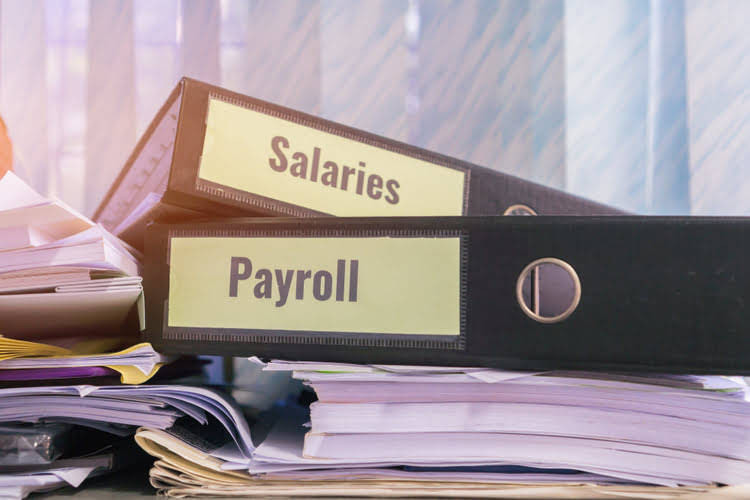It represents the https://lp.frankread.com/comprehensive-guide-to-partnership-accounting-2/ total profits that have been saved and put aside or “retained” for future use. The house has a current market value of $175,000, and the mortgage owed totals $100,000. Sam has $75,000 worth of equity in the home, or $175,000 (asset total) – $100,000 (liability total). Equity is the remaining value of an asset or investment after considering or paying any debt owed; the term is also used to refer to capital used for funding or a brand’s value.
How do you calculate shareholders’ equity?
Aside from stock (common, preferred, and treasury) components, the SE statement includes retained earnings, unrealized gains and losses, and contributed (additional paid-up) capital. Let’s assume that ABC Company has total assets of $2.6 million and total liabilities of $920,000. When a company sells shares, the money it receives from investors, minus the par value, is credited to an account named capital in excess of par value (or “additional paid-in capital”). In many cases, paid-in capital is not broken out on the balance sheet into two separate line items for the par value and the capital in excess of par value.
Calculate a Company’s Forward P/E in Excel
Accounts receivable include all amounts billed to customers on credit that relate to the sale of goods or services. Inventory includes all raw materials, work-in-process, finished goods, merchandise, and consigned goods being offered for sale by third parties. When calculating shareholders’ equity using either of the below two formulas, it’s essential to add up all of these components when calculating the total asset value of a firm. You can look for and calculate the equity in everything from basic items to business enterprises and stock portfolios. Regardless, equity is vital so that investors, shareholders and other interested parties can determine the actual value of an asset. As a result, many investors regard enterprises with negative shareholder equity as dangerous or unsafe investments.
- It denotes the company’s financial sustainability and has required surplus assets to pay back to its shareholders.
- Share capital is the money a company raises by selling its shares to shareholders in exchange for cash.
- To compute total liabilities for this equity formula, add the current liabilities such as accounts payable and short-term debts and long-term liabilities such as bonds payable and notes.
- For someone who is considering investing in a company, knowing about shareholders’ equity can help to better understand its financial health.
- To calculate a company’s equity, you essentially take its total assets and subtract its total liabilities.
Shareholders Equity Formula for Florida Small Businesses
- When liquidation occurs, there’s a pecking order that applies which dictates who gets paid out first.
- Because there are 10% more shares outstanding, each share should drop in value.
- Businesses can meet regulatory standards and avoid penalties by providing correct reports to tax authorities and auditing firms.
- Therefore, the stockholder’s equity of Apple Inc. has declined from $134,047 Mn as at September 30, 2017 to $107,147 Mn as at September 29, 2018.
- As you can see there is a heavy focus on financial modeling, finance, Excel, business valuation, budgeting/forecasting, PowerPoint presentations, accounting and business strategy.
And when it stays negative for long, the company can face financial trouble. The Shareholders’ Equity part of the equation is more complex than simply being the amount paid to the company by investors. It is actually their initial investment, plus any subsequent gains, minus any subsequent losses, minus any dividends or other withdrawals paid to the investors. The shareholders’ equity section tends to increase for larger businesses, since lenders want to see a large investment in a business before they will lend significant funds to an organization. Public companies in the U.S. use this formula to show their financial health. By employing the accounting equation, businesses can maintain a stable financial environment.
Everything to Run Your Business
But overall, it’s a much less complicated formula than other calculations that are used to evaluate a company’s financial health. Stockholders’ equity refers to the assets of a company that remain available to shareholders after all liabilities have been paid. Positive stockholder equity can indicate that a company is in good financial health, while negative equity may hint that the company is struggling or overextended with debt. Stockholders’ equity is typically included on a company’s balance sheet but it’s possible to calculate it yourself.
Other comprehensive income (OCI)
- It says a company’s assets must add up to its liabilities and equity.
- Although a lot of investment choices are based on the amount of risk we are willing to face, we cannot ignore all the important factors mentioned above.
- Practically, a corporation must also have a cash balance large enough to pay the dividend and still meet upcoming needs, such as asset growth and payments on existing liabilities.
- In contrast, early-stage companies with a significant number of promising growth opportunities are far more likely to keep the cash (i.e. for reinvestments).
- Although many investment decisions depend on the level of risk we want to undertake, we cannot neglect all the key components covered above.
- The earnings per share calculation is the after-tax net income (earnings) available for the common stockholders divided by the weighted-average number of common shares outstanding during that period.
These options are the balance sheet method, the accounting equation method, and the summation of equity components method. The common shareholders equity is the value of the common shares on a company’s balance sheet. shareholders equity equation Equity, also referred to as stockholders’ or shareholders’ equity, is the corporation’s owners’ residual claim on assets after debts have been paid.
Accounting Equation
The above formula is known as the basic accounting equation, and it is relatively easy to use. Take the sum of all assets in the balance sheet and deduct the value of all liabilities. Total assets are the total of current assets, such as marketable securities and prepayments, and long-term assets, such as machinery and fixtures.
Buybacks, for example, can push stockholders’ equity into negative territory in the short term but benefit Accounting For Architects the company financially in the long run. Common equity is a cornerstone of company valuation, serving as an indicator of financial health and growth potential. For equity analysts and investors, assessing common equity begins with evaluating book value, which provides a tangible measure of a company’s net asset value.




